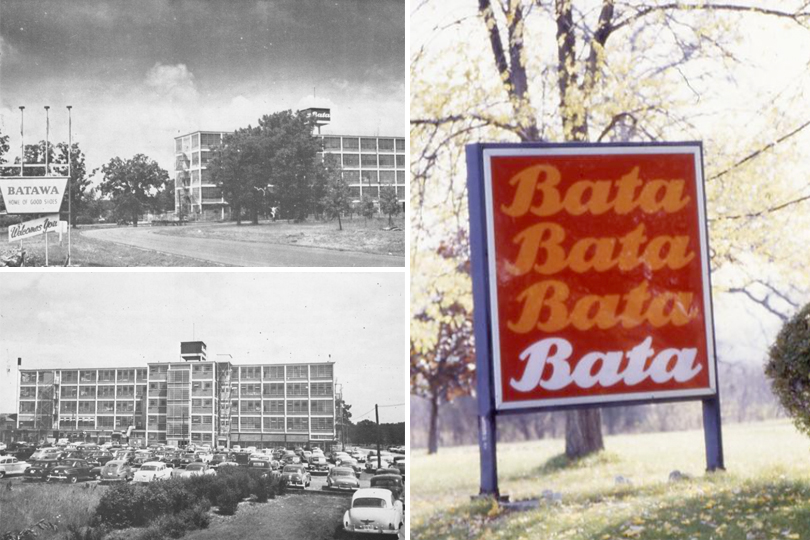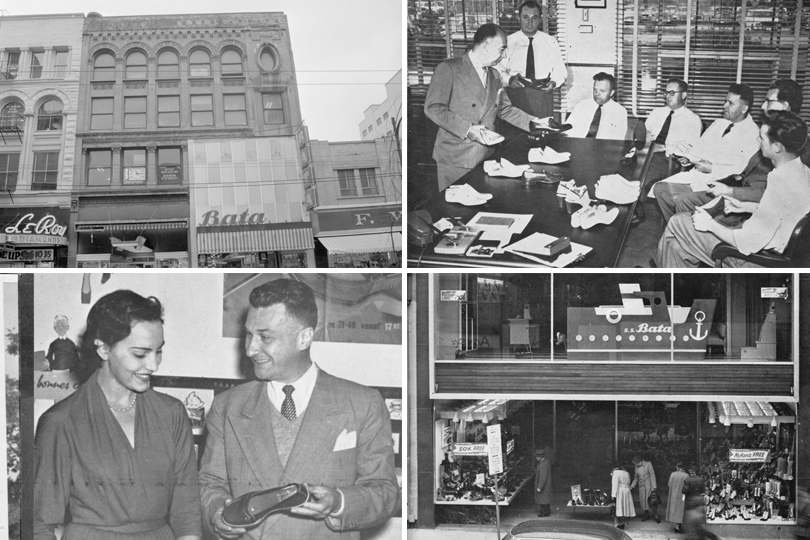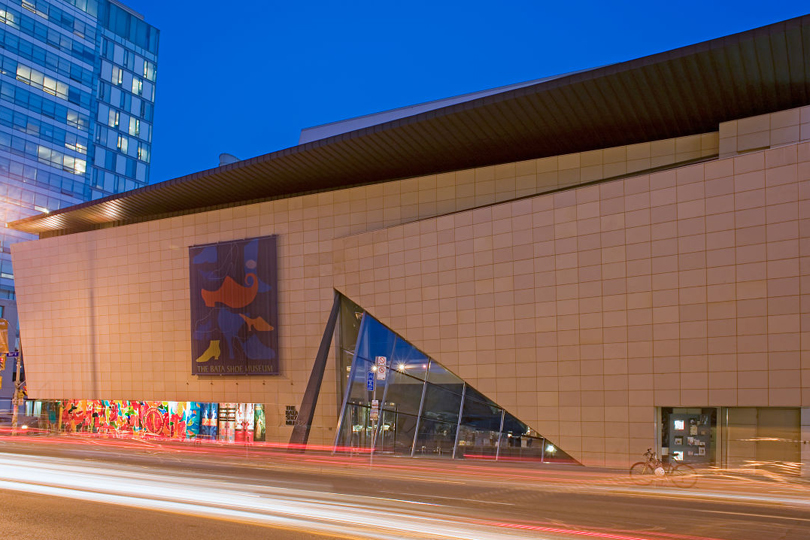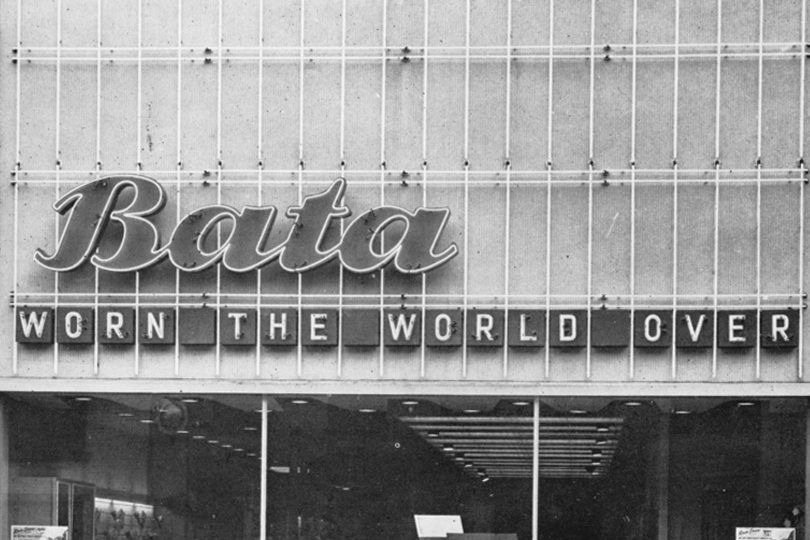Step back in time to discover the role Canada played in rebuilding the Bata Shoes empire and the legacy it left behind…
By Stephan Petar
After strolling Rome’s Villa Borghese, I ventured for an espresso and gelato. With no planned route, I wandered a nearby shopping district passing familiar brands found in Canada and others not operating in our retail landscape. Eventually, I stumbled on a familiar brand I had not seen for about two decades. In front of me was a red glowing sign with four handwritten letters reading “Bata.”
Many brands, from Target to United Colors of Benetton to Marks & Spencer, have exited Canada, but thrive internationally. Canada’s last Bata Shoes closed in 2005, but Bata Group still operates over 6,000 retail outlets across five continents selling about 148 million pairs of shoes annually, while operating 19 manufacturing sites.
Although it was founded in Europe over 130 years ago, Bata Shoes felt distinctly Canadian as it is where Thomas J. Bata, or “shoemaker to the world,” led the brand’s rebirth as the second world war and communism threatened the business in Europe.
With a deep history and lasting legacy in the country, why did it leave the Canadian market? It’s best to put on some comfortable shoes for this journey back in time.
A Shoemaking Dynasty
Thomas J. Bata was born into a family of shoemakers in 1914. His father, Tomáš, established the T & A Bata Company in 1894 with his siblings in Zlín, Czechoslovakia (modern day Czechia). Three years later it introduced the innovative Batovka shoe, which was a combination of leather and canvas, followed by its first store two years later. It was dubbed the largest footwear company in Europe by 1905, producing about 2,200 pairs of shoes daily. The brand became an inspiration to the country at the time, with Bata saying in his memoir that the company “was proof they [Czechoslovakians] could take on the world and win.”
When Bata’s father died in a plane crash in 1932, he inherited the business at 18 years-old along with his uncle Jan. While the company flourished throughout the ‘30s growing into new European markets, the Nazi threat led them to re-evaluate their place and expansion in Europe. As Bata recalled “…with war looming on the European horizon, Jan and I decided that I should abandon my plan to start a Bata enterprise in Belgium and go overseas instead.”
Canada was top of the list as Bata dreamt about it as a kid. His mother told him “romantic tales about the Wild West and about northern explorers,” leading him to see Canada as a glamorous and exciting place. He saw it as an opportunity for his growth calling it “…an ideal place to prove to myself…that I had what it takes to start up and manage an independent Bata company.”
His immigration journey had hiccups with an immigration official rejecting him, citing the country only needed farmers. After meeting with High Commissioner Vincent Massey, he was granted entry.
Once in Canada, he searched for a location for the enterprise and considered Quebec. However, he felt the language requirements might be challenging for the Czechoslovakian workers he was bringing over as many only knew how to speak Czech. Bata decided that integrating to a new country and learning two new languages (English and French) would be too much.
He ultimately selected the Trenton area in Ontario due to its abundance of land and proximity to rail, water and air transport. With property and 100 workers and their families immigrating to Canada, The Bata Shoe Company of Canada was ready to start operating.

A Town Built for Shoes
Combining the words Bata and Ottawa, the company created the town of Batawa in 1939. While dubbed a “company town,” it was never formally incorporated and is part of Quinte West. Batawa was home to the company factory, or “technological development centre” as it was described, with the goal of producing products to supply Bata stores globally.
The remaining land around the factory was developed into a community as Bata’s father believed “that businesses had a responsibility to its employees.” Replicating a model it executed in Czechoslovakia, the company built standardized housing and schools as well as opened a church and Bata-owned grocery store among other amenities. As the Welcome to Batawa guide noted, the town was planned to assure “its population all the comfort and safety of suburban living with good access to the cities in the surrounding area.” Similar towns were also established in France, India and Brazil.
Bata took his father’s vision and layered it with a global strategy, which was key to its success and mission to “Shoe the World.” From the mid-1940s to the 1970s, Bata Group expanded internationally with new factories and shops in about 70 countries, hired thousands of employees and built a reputation amongst consumers for its quality products. In 1964, it relocated its headquarters to Toronto and opened the “ultra-modern” Bata International Centre by architect John B. Parkin the following year.
By 1979, The Globe and Mail reported the Batawa factory was producing 4.6 million shoes annually. By the early ‘80s, CBC noted it had 250 retail locations in Canada. The brand was even getting coverage in top-tier fashion publications globally and its shoes were being worn by the likes of Nirvana’s Kurt Cobain and by John Goodman in the film The Big Lebowski.
The company was making strides, but began facing a changing import and export market, and stiffer competition as it got closer to the new millennium.

Worn Out Shoes
In October 1999, The Globe and Mail ran the headline Not a Shoo-in, reporting the closure of the Batawa factory in March of the following year. The closure would take shoe production out of the country and leave just over 200 employees jobless. The plant had lost $32-million in the past decade and shoe output fell below one million annually. A “competitive market dominated by imported shoes,” was one of the reasons for the decision.
A few weeks into the new millennium, Bata Group announced a revamp of its global operations shutting down stores and factories to reduce costs by $60 million. It began closing Canadian retail locations the following year, noting increased competition from Aldo, Payless and Wal-Mart.
Its head office relocated to Lausanne, Switzerland in 2003, where it remains today. The Bata International Centre was closed and demolished for the Aga Khan Museum with many critics describing its demolition as a great architectural loss.
Today, the company still touts to being a “world leader in the production and marketing of footwear.” While the brand hoped to return to Canada, it never did other than with a limited-edition run of its 1970s Bata Bullets Sneaker at the Drake General Store in 2017.

A Sole-ful Legacy
While they never returned, the family’s legacy is still felt. In Toronto, a unique museum founded by Bata’s wife Sonja tells “the stories of humankind through footwear.” Celebrating its 30th anniversary this year, Bata Shoe Museum holds a collection of 15,000 artifacts, with only three to four per cent on display at any given time. It is also an international centre for research on footwear.
After the Batawa factory’s closure, it and the surrounding land was sold and later repurchased by Sonja. Her vision was to create a sustainably-driven community and today the old factory is a 47-unit residential building called BatawaLofts.
Thomas Bata was still alive when the brand exited Canada and one can only imagine his disappointment as it started to collapse. This country gave him the opportunity to build upon his father’s vision and prove himself as a leader. He thanked Canada by contributing to the growth of institutions by joining boards like the National Ballet of Canada, which he said was “destined to play an important part in Canada’s cultural life.” In his memoir he stated how the only decoration that mattered to him, and which he wore with pride, was his Order of Canada.
Though Bata Group no longer operates in the country, Canadians should feel pride in seeing its stores on the streets of countries like Spain, Italy and Czechia. Its four glowing red letters serve as a reminder of how our country shaped it into a global leader.









